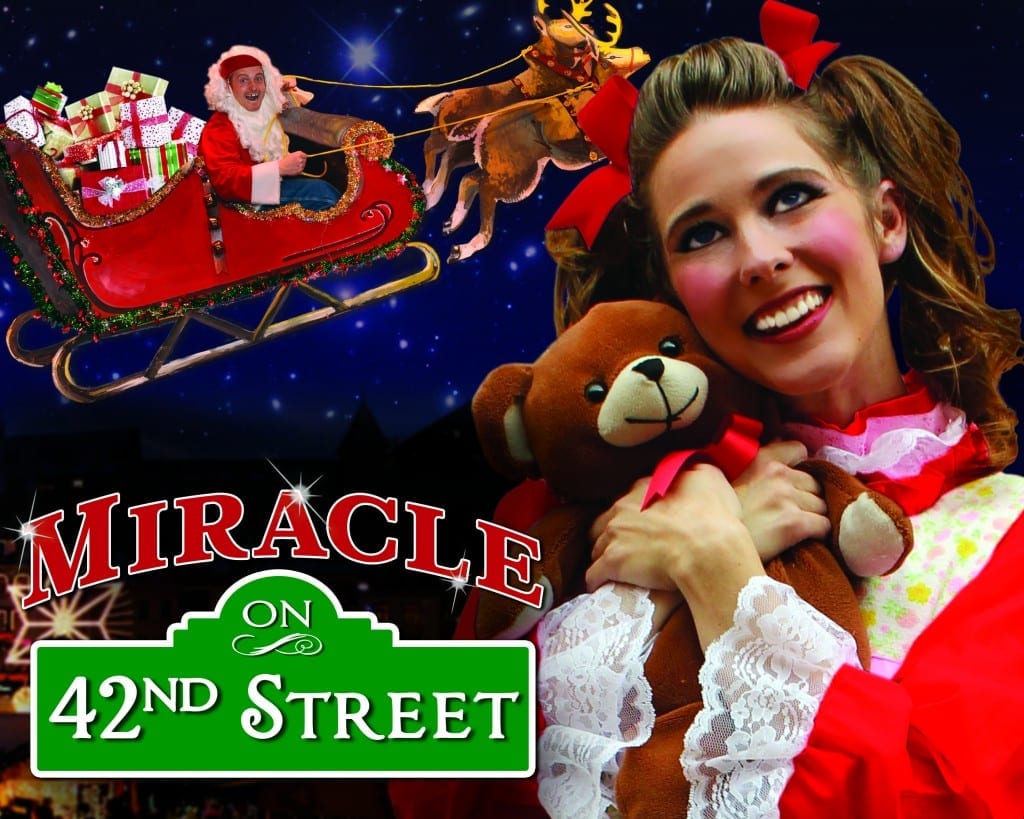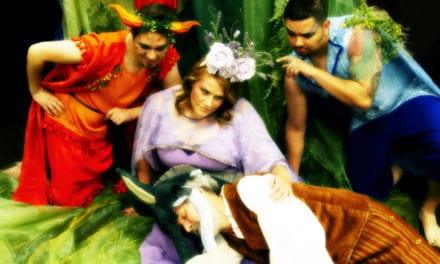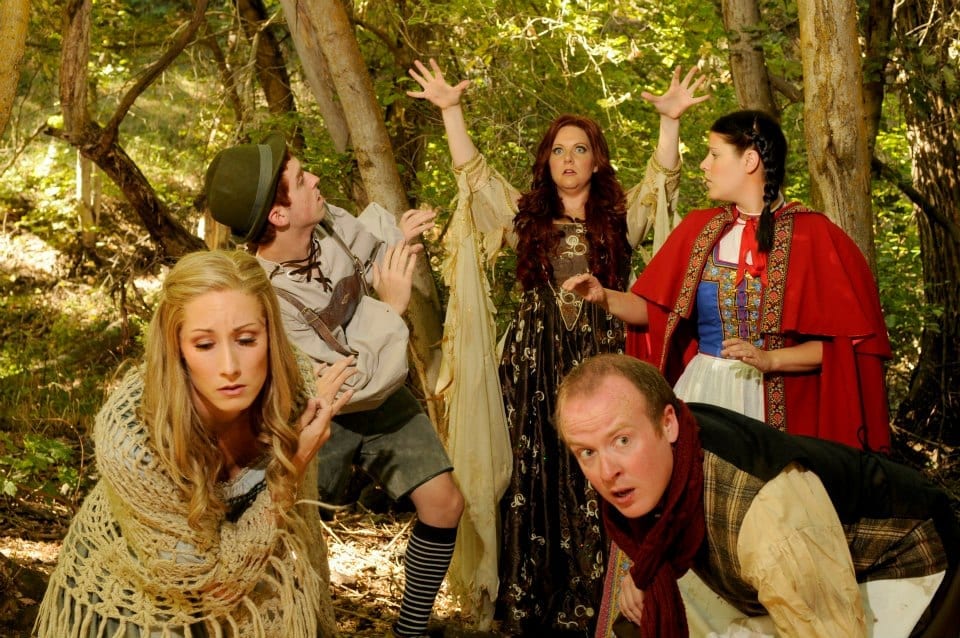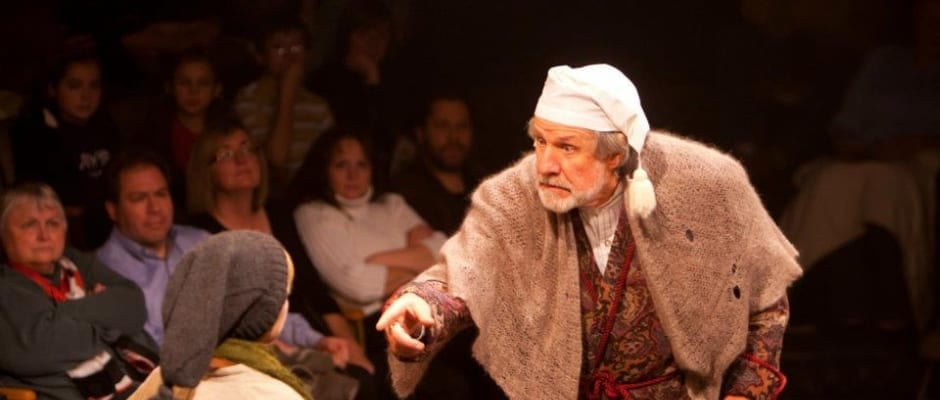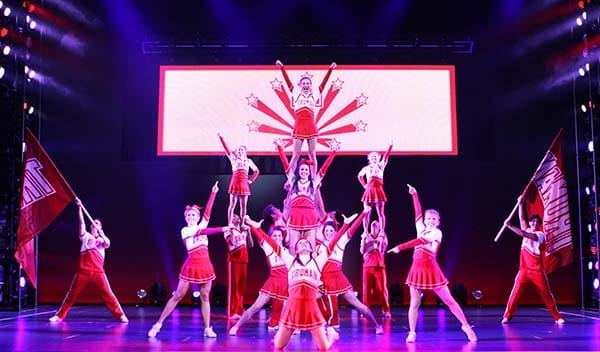
Miracle on 42nd Street plays through January 4th. (Left: Richie T. Steadman, Right: Kerstin Davis. Photos by Chad Witlock & Megan Summers)
MURRAY — Desert Star Playhouse’s Miracle on 42nd Street is based on Miracle on 34th Street, interspersed with some creative gags and song and dance numbers. The overall plot is loosely similar to the source material: Natalie is an 8-year-old girl whose mother, Sarah, has taught her not to believe in Santa Claus. But when the two meet a jolly old soul who decidedly resembles Kris Kringle, it’s hard for either of them to keep doubting.
The play’s song and dance numbers were each perfectly executed (choreography by Kerstin Davis). Each performer had just the kind of voice and talent the pieces called for. I can’t say as much for the comedic elements of the play. While many of the play’s gags were hackneyed, the few that weren’t already tired were botched by a cast with poor comedic timing and a propensity for mugging for the audience after each gag. Under the direction of Scott Holman and Mary Parker Williams, audience interaction was obviously a big part of the show. But many times it just felt like the cast were begging for laughs.
The pianist, Jordan Richardson, was easily my favorite member of the cast. With his talented accompaniment and energetic audience interaction, his performance was both engaging and pleasant. Beyond Richardson, it’s hard to pick out any actors for specific applause or criticism, largely because their obvious vocal talents were all accompanied by the same flaws in comic execution. Still, they each fit their intended role: Sarah (Ashley LaRue Haslam) was a stressed-out working mother, and Bill Gailey (Jason Craig West) was her benign suitor. Natalie (MeKenzie Heaton) was a pretty obnoxious eight-year-old, which I presume is what Holman and Williams wanted her to be. C.B. d’Mille (Dan Larrinaga) was the cynical New York director, Joan Quivers (Aubrey Vance) was the many-times face-lifted actress. Hardy Steele (Todd Michael Thompson) and his girlfriend Laurel Lye (Stefanie Omer) were the perfect combination of villainy and self-absorbed cluelessness. Santa Klaws (Richie T. Steadman) was exactly the hick the script intended him to be, and Kris Kringle (Brent Rindlisbacher) instantly gave the vibe of how Santa Claus would act if he were disguised in a suit.
Especially worthy of praise are costume designers Lynn Funk and Mary Parker Williams. Their costumes quickly communicated to the audience exactly which kind of personality to expect from the respective characters. Light and Sound were flawless (Eric Jensen and Richard Nielsen) which is especially important in a fast-moving musical with a variety of solo and ensemble numbers. The set (by Frank Ackerman, Margaret Blake, Bryan Christensen, Chad Davis, Garrick Dean, Seven Nielsen) was mainly painted wooden backdrops, each of which clearly expressed the scene’s location and mood.
 This was my first visit to Desert Star Playhouse, and I had heard great things about their comic performances. Unfortunately, Miracle on 42nd Street didn’t live up to the playhouse’s reputation. The majority of the play’s gags were worn out. If I hadn’t heard the jokes in Eric Jensen’s script before, I might have laughed at some of them. Almost all of the jokes had been done to death elsewhere, and I felt like I was hearing the same old story some annoying relative insists on telling at every family gathering. Except without any of the endearing nostalgia.
This was my first visit to Desert Star Playhouse, and I had heard great things about their comic performances. Unfortunately, Miracle on 42nd Street didn’t live up to the playhouse’s reputation. The majority of the play’s gags were worn out. If I hadn’t heard the jokes in Eric Jensen’s script before, I might have laughed at some of them. Almost all of the jokes had been done to death elsewhere, and I felt like I was hearing the same old story some annoying relative insists on telling at every family gathering. Except without any of the endearing nostalgia.
In addition to that, the playwrights (Norman E. Plate, Beth Bruner, and Scott Holman) didn’t seem to know his target audience. Yes, there were loads of jokes about Utah culture, and a few of those earned a laugh. I got the idea from the Mormon jokes and overall squeaky clean humor that Desert Star was aimed at one demographic, but then the odd sexual innuendo of some jokes surprised me. As such, I’m not exactly sure who I would recommend should see this show.

